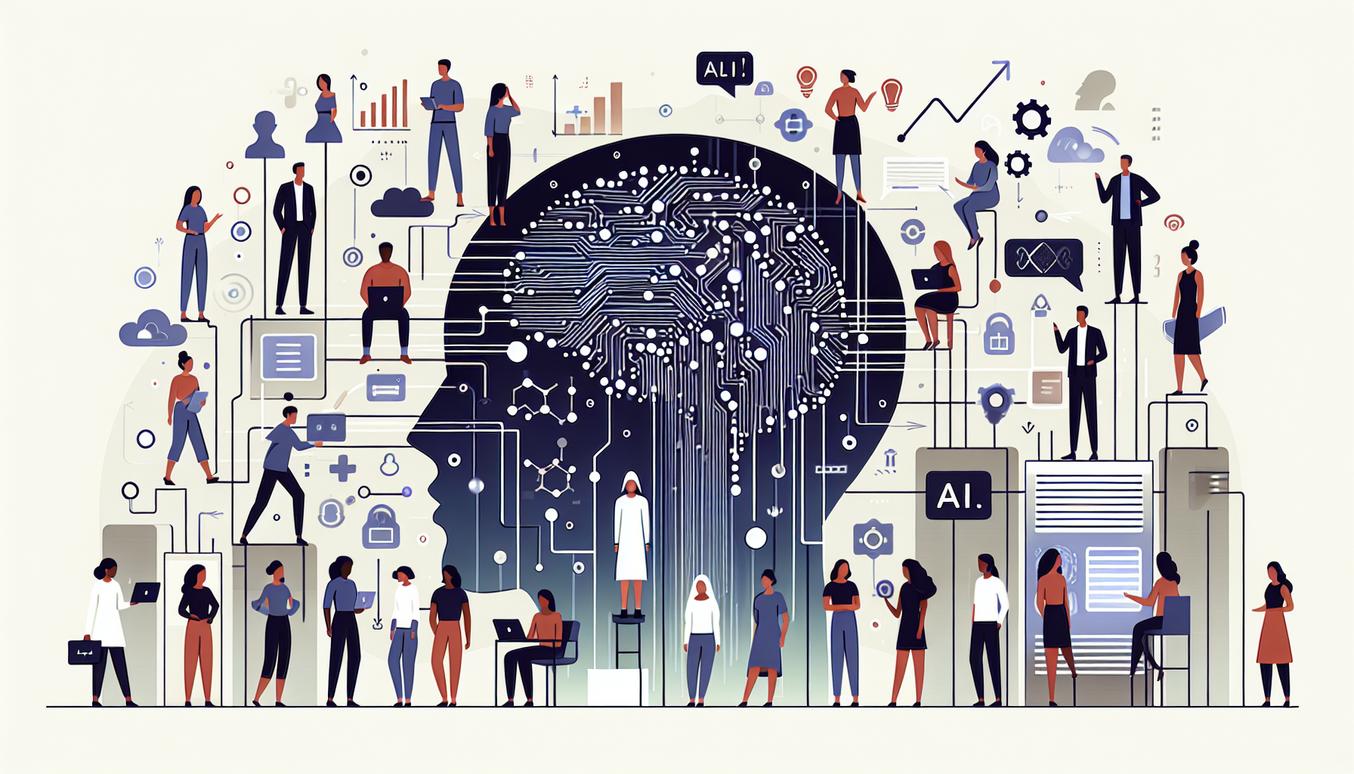Table of Contents
- Why Artificial Intelligence Matters in Clinical Care
- How AI Learns From Clinical Data
- Core AI Methods for Clinical Applications
- Data Quality, Labeling and Governance
- Model Validation, Bias and Performance Metrics
- Integrating AI Into Clinical Workflows
- Ethics, Privacy and Responsible Use
- Deployment, Monitoring and Maintenance
- Concise Case Studies and Lessons Learned
- Implementation Roadmap and Practical Checklist
- Emerging Trends and Research Directions
- Resources, Glossary and Further Reading
Why Artificial Intelligence Matters in Clinical Care
The landscape of modern medicine is characterized by unprecedented data volume, clinical complexity, and mounting pressure on healthcare systems. In this environment, Artificial Intelligence in Healthcare is not a distant concept but an essential set of tools for driving efficiency, augmenting clinical expertise, and personalizing patient care. For healthcare leaders, clinicians, and data scientists, understanding its principles and applications is now a strategic imperative.
AI’s core value lies in its ability to identify complex patterns in vast datasets that are beyond human capacity to analyze. This translates into tangible benefits across the care continuum, from early disease detection and diagnostic support to optimized treatment pathways and operational streamlining. By automating repetitive tasks and providing data-driven insights, AI empowers clinicians to focus on their most critical role: delivering compassionate, high-quality patient care. The successful integration of Artificial Intelligence in Healthcare promises to alleviate administrative burdens, improve diagnostic accuracy, and ultimately enhance patient outcomes.
How AI Learns From Clinical Data
At its heart, clinical AI is about learning from data. An algorithm, or model, is trained on a large dataset of clinical information—such as medical images, electronic health records (EHRs), or genomic sequences—to recognize patterns and make predictions or classifications on new, unseen data. The learning process is fundamentally mathematical, enabling the model to “understand” the relationships between inputs (e.g., patient symptoms) and outputs (e.g., a diagnosis).
Supervised and Unsupervised Techniques
The methods by which AI models learn can be broadly categorized into two primary types:
- Supervised Learning: This is the most common approach in healthcare AI. The model is trained on a dataset where both the input data and the correct output are known, or “labeled.” For instance, a model could be trained on thousands of retinal scans that have been expertly labeled by ophthalmologists as either showing diabetic retinopathy or not. The algorithm learns the features associated with the disease to accurately classify future scans.
- Unsupervised Learning: In this method, the model is given a dataset without explicit labels and must find patterns or structures on its own. A common application is patient stratification, where an algorithm might analyze EHR data to identify previously unknown patient subgroups with similar characteristics, potentially revealing new disease phenotypes or risk factors.
Deep Learning and Neural Networks in Medicine
Deep learning is a sophisticated subfield of AI that uses Neural Networks with many layers (hence “deep”) to learn from data in a hierarchical manner. This structure is particularly effective at recognizing highly complex patterns, making it ideal for medical applications like image analysis and genomics.
In radiology, for example, a deep learning model can be trained to detect subtle indicators of a tumor in a CT scan by learning to recognize features at different levels of abstraction—from simple edges and textures in the initial layers to complex shapes and anatomical structures in deeper layers. This capability underpins many of the most advanced applications of Artificial Intelligence in Healthcare today.
Core AI Methods for Clinical Applications
Beyond learning paradigms, specific AI methods are tailored to different clinical tasks. Understanding these core applications helps in identifying the right tool for a given healthcare challenge.
- Computer Vision: This field enables AI to “see” and interpret medical images. Applications include identifying cancerous lesions in mammograms, quantifying organ volume from MRI scans, and detecting fractures in X-rays.
- Natural Language Processing (NLP): NLP gives machines the ability to understand and process human language. In healthcare, it is used to extract structured information from unstructured clinical notes, summarize patient histories from EHRs, and power conversational AI for patient engagement.
- Predictive Analytics: These models use historical data to forecast future events. Common uses include predicting patient readmission risk, identifying individuals at high risk for developing sepsis, and forecasting patient flow in emergency departments.
- Robotic Process Automation (RPA): While simpler than other forms of AI, RPA is used to automate repetitive, rule-based administrative tasks like billing, scheduling, and data entry, freeing up human staff for more complex work.
Data Quality, Labeling and Governance
The performance of any AI model is fundamentally limited by the quality of the data it is trained on. The principle of “garbage in, garbage out” is paramount. For healthcare AI projects, ensuring high-quality data involves several key steps:
- Data Curation and Cleaning: Clinical data is often messy, with missing values, inconsistencies, and errors. A rigorous process of cleaning and standardizing the data is the first and most critical step.
- Expert Labeling: For supervised learning, data must be accurately labeled by clinical experts. The quality and consistency of these labels directly impact the model’s reliability. This is often the most time-consuming and expensive part of model development.
- Data Governance: A strong governance framework is essential. This includes clear policies on data ownership, access controls, privacy protocols, and documentation of data lineage to ensure traceability and accountability throughout the AI lifecycle.
Model Validation, Bias and Performance Metrics
A model that performs well on training data is not guaranteed to work in the real world. Rigorous validation is essential to ensure a model is accurate, reliable, and fair before it is deployed in a clinical setting.
Key performance metrics are used to evaluate a model’s effectiveness. The choice of metric depends on the clinical task.
| Metric | Description | Clinical Relevance |
|---|---|---|
| Accuracy | The proportion of total predictions that were correct. | Useful for balanced datasets but can be misleading for rare diseases. |
| Precision | Of all the positive predictions, how many were actually correct. | Crucial when a false positive is costly (e.g., a false cancer diagnosis). |
| Recall (Sensitivity) | Of all the actual positive cases, how many did the model correctly identify. | Vital when a false negative is dangerous (e.g., missing a sepsis case). |
| AUC-ROC | Area Under the Receiver Operating Characteristic Curve. Measures the model’s ability to distinguish between classes. | Provides a comprehensive measure of a model’s diagnostic ability. |
Beyond metrics, it is critical to assess models for algorithmic bias. If a model is trained on data from one demographic, it may perform poorly or unfairly for other populations. Proactive bias detection and mitigation strategies are essential for equitable Artificial Intelligence in Healthcare.
Interpretable Models and Explainability
Many powerful AI models, particularly in deep learning, are considered “black boxes” because their internal decision-making processes are not easily understood by humans. This lack of transparency is a significant barrier to clinical adoption. Explainable AI (XAI) refers to methods and techniques that help explain how a model arrived at a specific prediction. For a clinician to trust and act on an AI-generated recommendation, they need to understand its rationale. For example, an XAI technique might highlight the specific regions of a chest X-ray that led a model to flag it for potential pneumonia.
Integrating AI Into Clinical Workflows
A technically sound AI model is useless if it is not seamlessly integrated into the clinical workflow. The goal is to augment, not disrupt, the clinician’s work. Successful integration requires a deep understanding of existing processes and a user-centered design approach. The AI tool should present information in an intuitive, actionable format at the right point in the decision-making process, for example, by flagging a high-risk patient directly within the EHR interface.
Change Management and Staff Training
The human element is central to the adoption of Artificial Intelligence in Healthcare. A robust change management strategy is as important as the technology itself.
- Clinician Engagement: Involve clinicians from the very beginning of the project to ensure the tool addresses a real clinical need and is designed for usability.
- Clear Communication: Communicate the purpose, benefits, and limitations of the AI tool. It is a support system, not a replacement for clinical judgment.
- Comprehensive Training: Staff must be trained not only on how to use the tool but also on how to interpret its outputs, understand its limitations, and what to do when they disagree with its recommendations.
Ethics, Privacy and Responsible Use
The use of patient data to train and deploy AI models raises significant ethical and privacy considerations. A framework for responsible AI must be established, grounded in principles of:
- Patient Privacy and Data Security: Adherence to regulations like HIPAA is non-negotiable. Data must be de-identified where possible, and robust cybersecurity measures must be in place.
- Accountability and Transparency: Clear lines of accountability must be established. Who is responsible if an AI model makes an error? Organizations must be transparent with patients about how their data is being used.
- Fairness and Equity: As mentioned, models must be rigorously tested to ensure they do not perpetuate or amplify existing health disparities.
Deployment, Monitoring and Maintenance
Deploying an AI model is not the end of the journey. Healthcare is a dynamic environment, and a model’s performance can degrade over time—a phenomenon known as model drift. This can happen if patient populations, clinical practices, or even medical equipment change. Therefore, continuous monitoring and maintenance are critical.
A robust monitoring plan involves tracking the model’s performance metrics in real-time and establishing feedback loops where clinicians can report unexpected or incorrect outputs. Regular retraining of the model with new data is necessary to ensure its continued accuracy and relevance.
Concise Case Studies and Lessons Learned
- Vignette 1: Sepsis Prediction in the ICU. A hospital implemented a predictive model that analyzes real-time data from the EHR to identify patients at high risk for developing sepsis. The model alerts the clinical team via a notification in the patient’s chart. Lesson Learned: The success of the tool depended not on the alert itself, but on the standardized clinical protocol that was triggered by the alert, ensuring a rapid and consistent response.
- Vignette 2: AI-Assisted Radiology Workflow. A radiology department integrated an AI tool to triage chest X-rays. The model automatically flags studies with critical findings, moving them to the top of the reading queue. Lesson Learned: Initial resistance from radiologists was overcome by demonstrating that the tool reduced turnaround time for critical cases and acted as a reliable “second reader,” improving diagnostic confidence.
- Vignette 3: NLP for Administrative Burden. A large clinic used an NLP tool to automatically extract and summarize relevant patient information from lengthy clinical notes, pre-populating fields for the next encounter. Lesson Learned: The greatest value was realized in reducing clinician burnout and cognitive load, allowing more time for direct patient interaction.
Implementation Roadmap and Practical Checklist
Adopting Artificial Intelligence in Healthcare requires a structured, phased approach. The following checklist provides a high-level roadmap for healthcare leaders planning initiatives for 2025 and beyond.
- Phase 1: Strategy and Problem Identification
- [ ] Identify a high-value clinical or operational problem.
- [ ] Assemble a multidisciplinary team (clinicians, IT, data scientists, administration).
- [ ] Assess data availability, quality, and accessibility.
- [ ] Define clear success metrics (clinical, operational, financial).
- Phase 2: Development and Validation
- [ ] Curate and prepare the training dataset.
- [ ] Select an appropriate AI model and develop it.
- [ ] Rigorously validate the model’s performance on an unseen test dataset.
- [ ] Conduct a thorough bias and fairness audit.
- [ ] Document the model’s performance, limitations, and intended use.
- Phase 3: Pilot Integration and Clinical Workflow Design
- [ ] Design the integration into the clinical workflow in a non-disruptive way.
- [ ] Conduct a limited pilot study in a controlled environment.
- [ ] Gather feedback from end-users to refine the tool and workflow.
- [ ] Develop a comprehensive training program for staff.
- Phase 4: Scaled Deployment and Continuous Monitoring
- [ ] Implement a phased rollout across the organization.
- [ ] Establish a system for monitoring the model’s live performance.
- [ ] Create a feedback mechanism for clinicians to report issues.
- [ ] Plan for periodic model retraining and maintenance.
Emerging Trends and Research Directions
The field of Artificial Intelligence in Healthcare is evolving rapidly. Key trends to watch include:
- Federated Learning: A technique that allows AI models to be trained across multiple institutions without centralizing sensitive patient data, enhancing privacy.
- Generative AI: Models that can create new data, such as synthetic patient records for training or AI-generated summaries of medical literature.
- Multimodal AI: Systems that can integrate and learn from different types of data simultaneously—such as images, text, and lab values—to create a more holistic view of the patient.
Resources, Glossary and Further Reading
Glossary of Key Terms
- Model Drift: The degradation of an AI model’s performance over time due to changes in the real-world data it processes.
- Overfitting: When a model learns the training data too well, including its noise, and fails to generalize to new, unseen data.
- Explainable AI (XAI): Methods that enable human users to understand and trust the results and output created by machine learning algorithms.
Further Reading and Official Resources
For authoritative guidance and research on the use of Artificial Intelligence in Healthcare, consult these key organizations:
- World Health Organization (WHO): Provides global guidance on the ethics and governance of AI for health.
- National Institutes of Health (NIH): Funds and conducts research on a wide range of AI applications in medicine.
- U.S. Food and Drug Administration (FDA): Regulates AI- and machine learning-enabled medical devices in the United States.









